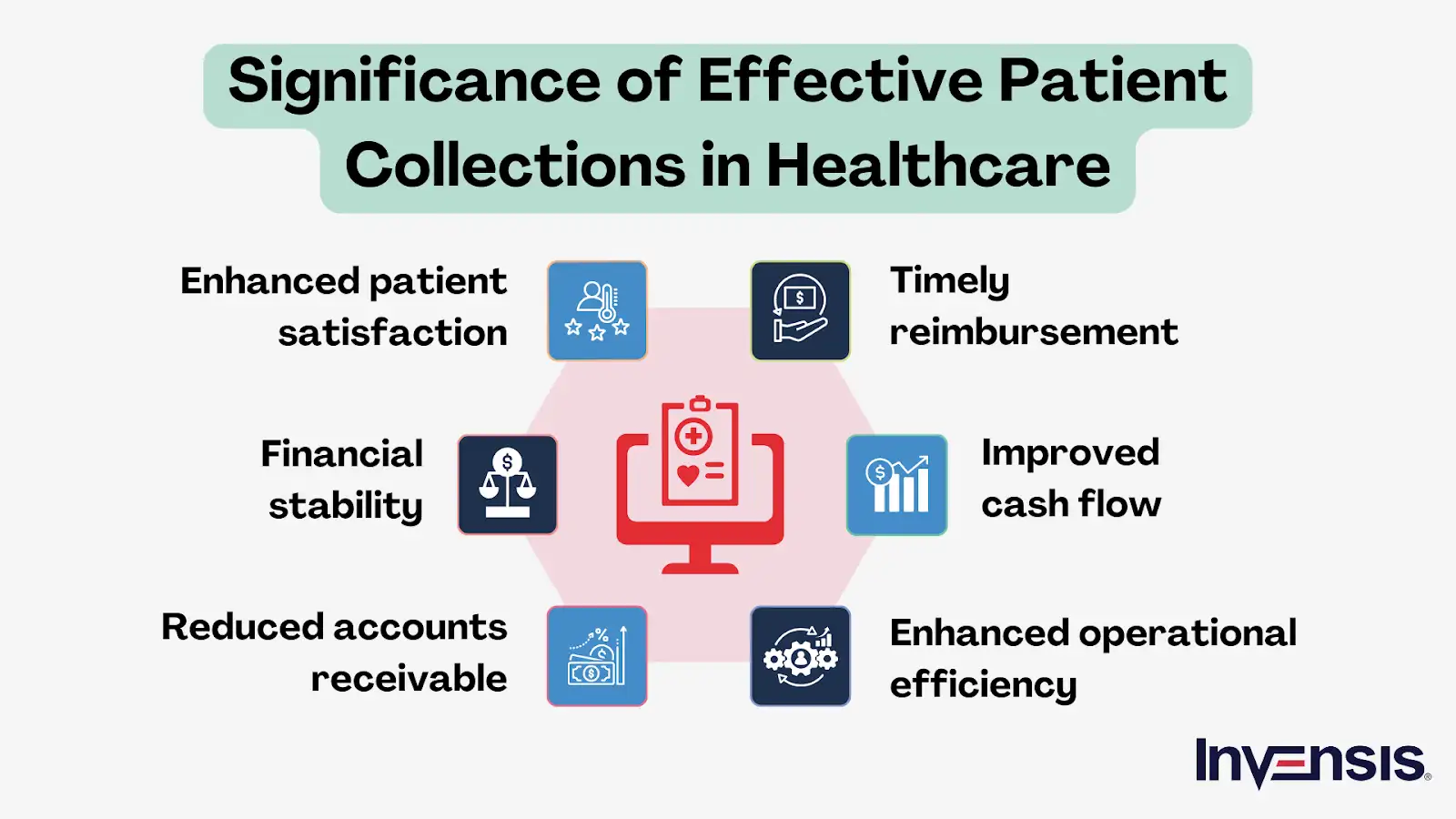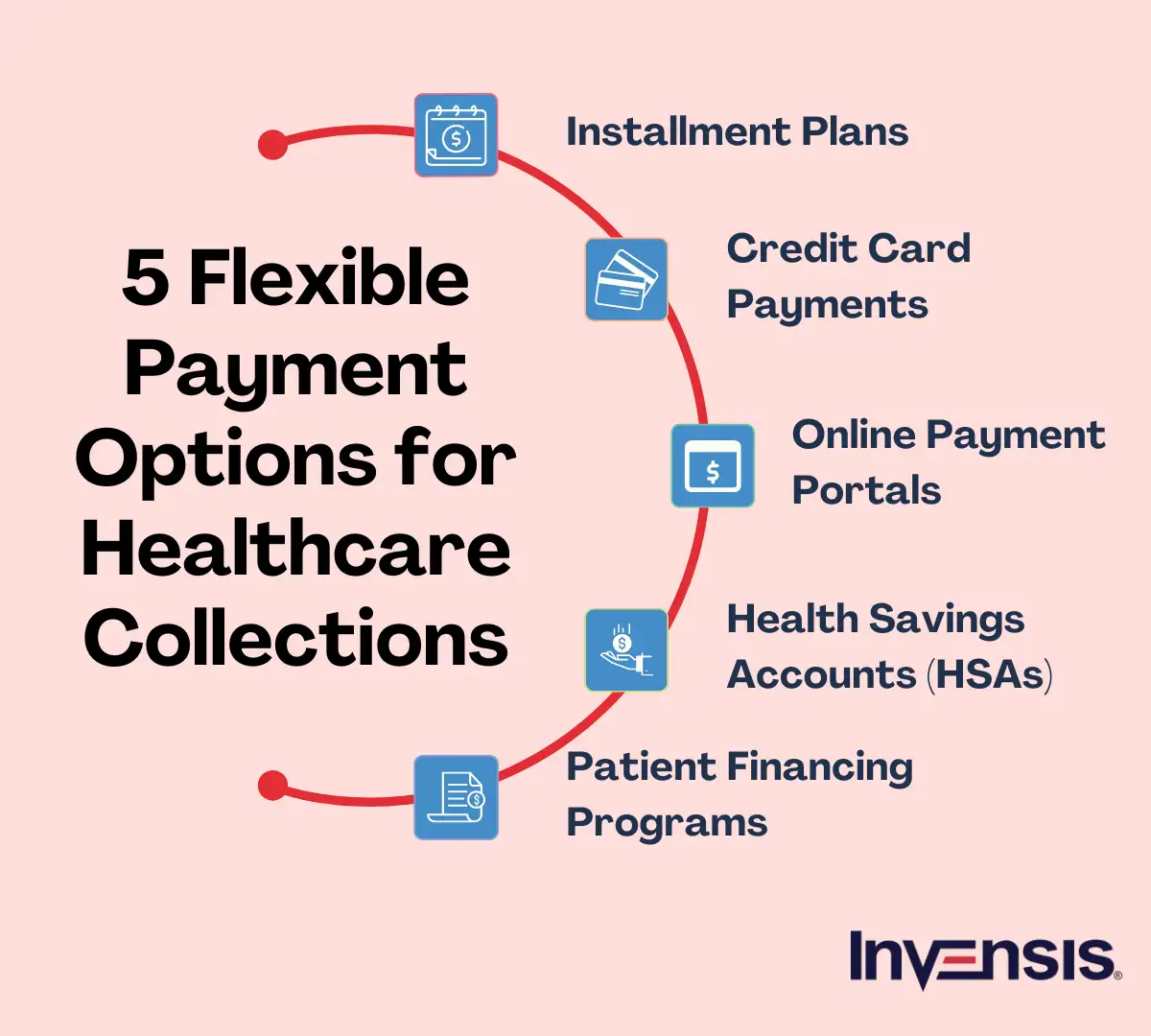
Patient collection, also known as patient financial responsibility or patient payment collection, refers to the process of collecting payments from patients for healthcare services received. It plays an important role in the financial stability and sustainability of healthcare organizations.
However, patient collection can be challenging for healthcare organizations. This is primarily because patients often have varying levels of understanding regarding their insurance coverage and financial responsibilities, leading to confusion and potential resistance to making payments. Moreover, the sensitivity surrounding financial discussions can make patient collection emotionally draining.
In this blog, we will delve into five proven ways that will revolutionize your approach to patient collections.

Here are five effective strategies to enhance patient collections:
Inefficient billing processes often result in delayed or inaccurate invoices, leading to patient confusion and frustration. Common challenges include coding errors, lack of price transparency, and delays in submitting claims. These issues can increase payment delays, reduce collection rates, and negatively affect patient trust.
Streamlining billing processes involves automating workflows, ensuring accurate coding, and offering clear billing statements. This enhances transparency, reduces errors, and speeds up claim submissions. By simplifying the payment experience, healthcare providers can minimize disputes, improve cash flow, and foster better patient relationships, ultimately boosting collection efficiency.
Steps to Streamline Billing Processes:
Patients often face confusion and frustration due to unclear or hidden healthcare costs, making it challenging for them to plan their finances. This lack of transparency leads to billing disputes, delayed payments, and dissatisfaction, all of which hinder timely collections and strain patient-provider relationships.
Implementing clear and transparent pricing involves providing upfront cost estimates and detailed breakdowns of services. This builds trust, empowers patients to manage their expenses, and reduces billing conflicts. By fostering transparency, healthcare providers can encourage prompt payments, streamline collections, and strengthen patient loyalty.
Rigid payment structures can create financial strain for patients, leading to delayed payments or missed collections. Common challenges include patients being unable to afford large lump-sum payments or feeling overwhelmed by complex billing systems, which can hinder timely payments and create collection difficulties.
Offering flexible payment options, such as payment plans, online portals, or financing, allows patients to pay in manageable installments. This increases the likelihood of timely payments, reduces outstanding balances, and enhances patient satisfaction. By accommodating various financial situations, healthcare providers can significantly improve collection rates and maintain positive patient relationships.

Poor communication with patients can lead to misunderstandings about billing, causing delayed payments and disputes. A lack of proactive communication regarding outstanding balances or insurance claims often results in confusion and frustration, which directly impacts collection efforts and delays revenue flow.
Enhancing communication involves sending timely reminders, offering clear explanations of charges, and being responsive to patient inquiries. This helps ensure that patients understand their financial responsibilities and feel supported throughout the payment process. Improved communication encourages prompt payments, reduces billing errors, and strengthens trust, ultimately improving collections and patient satisfaction.
Manual billing processes are prone to errors, inefficiencies, and delays, which hinder timely collections. Challenges like human error, paperwork, and lengthy follow-ups can significantly slow down the payment cycle, leading to higher accounts receivable and increased operational costs.
Utilizing technology and automation streamlines billing, claim submissions, and follow-up processes. Automated reminders, electronic statements, and online payment systems reduce administrative burdens and accelerate collections. By minimizing human error and optimizing workflows, healthcare providers can improve payment accuracy, reduce delays, and increase collection efficiency, leading to better cash flow management.
Improving patient collections is critical to running a successful healthcare practice. The complex nature of the healthcare billing landscape, changing regulations, and the need for specialized expertise can make the task overwhelming for in-house teams. Partnering with a specialized third-party provider can significantly improve patient collection outcomes.
Invensis brings over two decades of experience providing healthcare businesses with tailored medical accounts receivable services to clients based in the US. Our expertise and proven strategies have helped our clients streamline their patient collections process, ensuring timely and accurate payments. Contact us today to learn how our proven strategies can revolutionize patient collection efforts.
Blog Category

Find the leading accounting firms in Singapore trusted by businesses for audit, tax, and advisory services.
October 7, 2025
|

Explore the leading accounting firms in South Africa providing expert audit, tax, cloud accounting, and payroll services. Learn about their key features and unique offerings.
October 7, 2025
|

Explore what project accounting is, how it works, and why it’s essential for businesses. Understand key principles, revenue recognition methods, and best practices to improve your knowledge.
October 7, 2025
|
